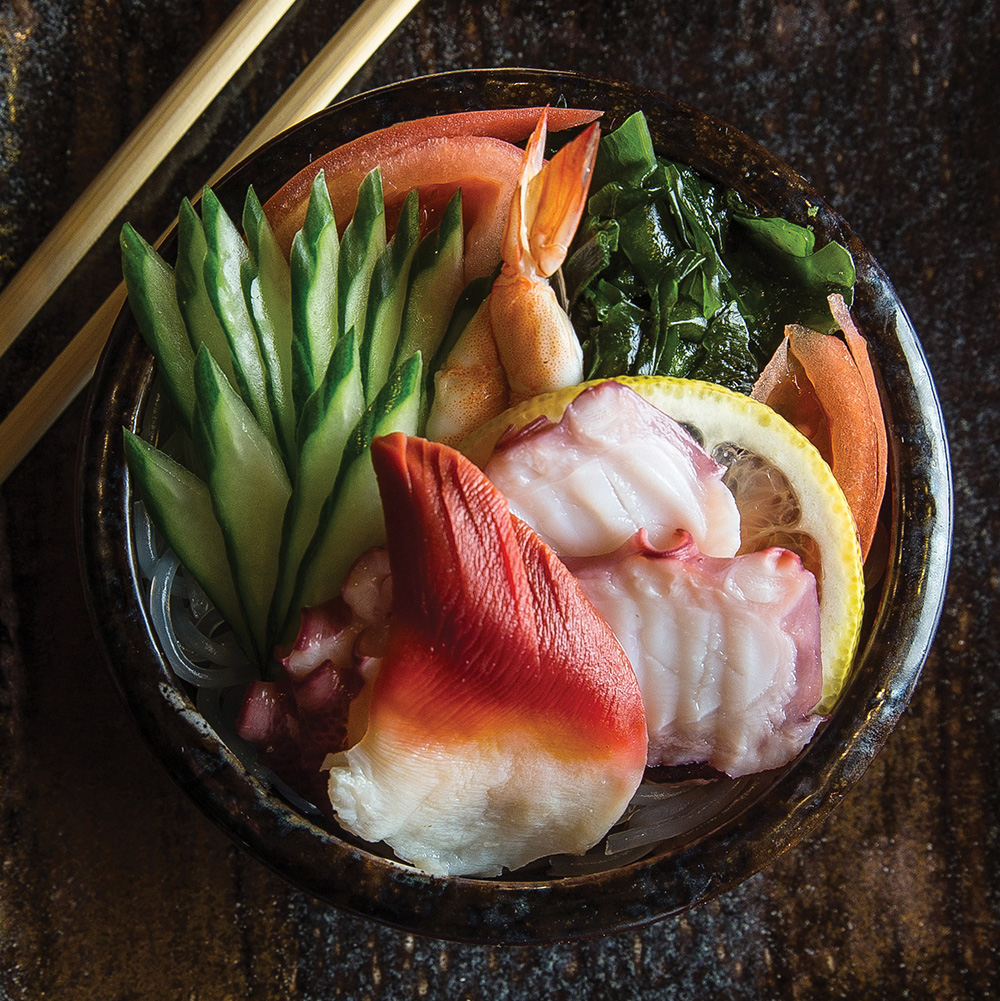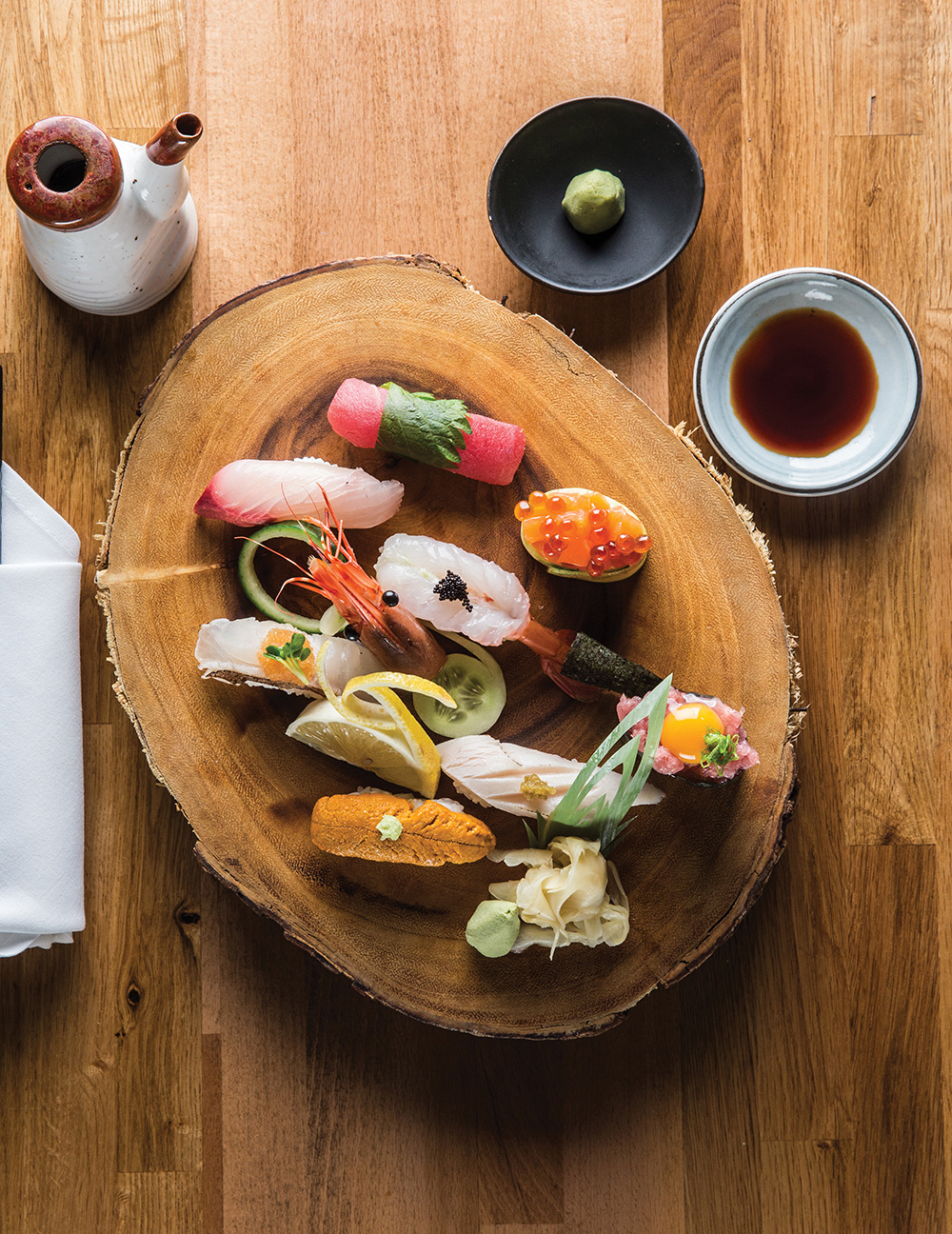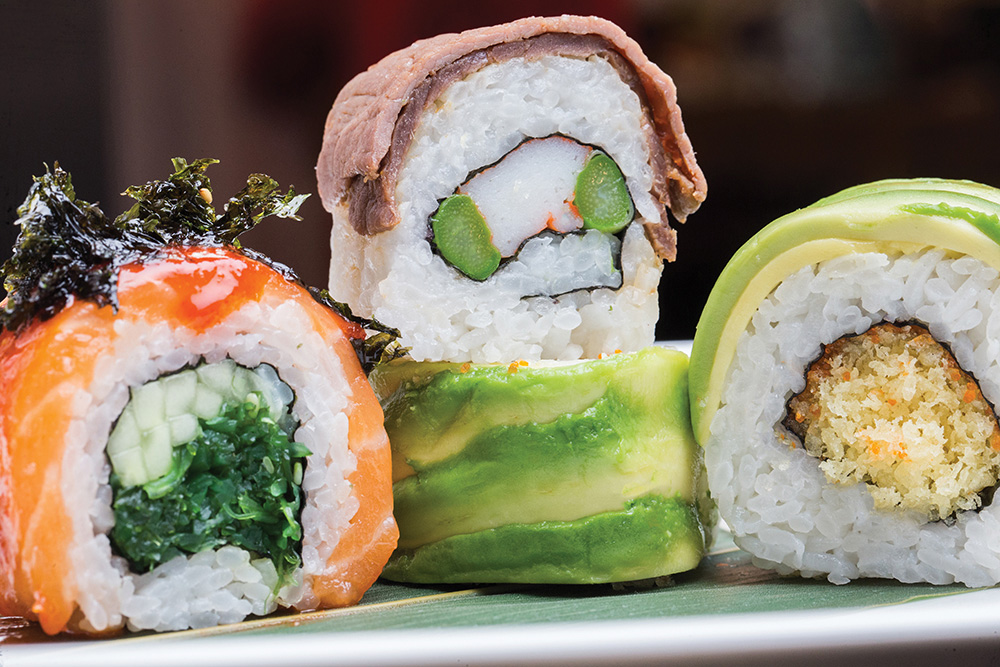A Photo Essay
by Curtis Comeau

Photographing in a sushi restaurant is a wonderful experience. Each dish is always colourful, well-crafted, balanced and creative. Even a minimalist dish at a sushi restaurant has an aesthetic that is pleasing to the eye.
I eat sushi at least a few times a week, so when The Tomato asked me to capture a photo essay focusing on the Art of Sushi I figured I was well-prepared to shoot this story. However, early on in this assignment I found out that, even as a regular sushi eater, I had several misconceptions about sushi in general.

You are a Sushi Chef right?
A sushi chef is called an itamae. The word literally translates as front of the board, which refers to the cutting board where he or she works. A respected itamae requires discipline, precision, attention to detail and longevity in their profession.
“An itamae tends to be a very serious individual. They need to care about each dish that goes out, they have to see each dish as an extension of themselves,” says one restaurant manager.
When I photographed itamae Shigeo Takeda of Japonais I found out that he had been practising his craft for 20 years and during that whole time has only used one knife.

Nigiri is fancy food.
I knew that nigiri, slices of raw seafood over hand-pressed vinegared rice, is one of the original forms of sushi. I did not know that nigiri is actually an early form of fast food. In the late 1800s nigiri, as we know it today, was consumed by locals in Edo Japan on their way to work and at the theatre. Another misconception I had was how to eat it. Nigiri should be eaten with the hands and NOT chopsticks. “It’s kind of like a slice of pizza. You can eat pizza with a fork and a knife if you wish but it’s meant to be eaten with your hands,” one itamae tells me.

Sashimi is just RAW fish.
I was correct that in Japanese cuisine sashimi is most commonly served as raw fish or seafood. However, I learned that sashimi can also be raw meats such as beef, horse, chicken or frog. The other differentiating characteristic of sashimi is that it’s not served on rice of any kind, but is often served on a bed of greens as a sashimi salad. Itamaes fully express their creativity when creating sashimi dishes.
All Maki Rolls are created equal.
I had figured a maki roll was simply known as a roll. I found out that there are actually several types of maki: hosomaki, chumaki, futomaki, uramaki, temaki. Maki is not differentiated by the types of ingredients used, but by three elements: the physical size of the roll; the placement of the nori (seaweed paper) and the number of ingredients. You can make maki with seafood, beef, tofu, egg, literally anything.

Uramaki, also known as the inside out roll, is probably the most common type of maki in North America. The nori is on the inside and the rice and other ingredients are on the outside. Uramaki tends to be very colourful and shows a lot of ingredients, making it pleasing to the eye. Popular uramaki rolls are the rainbow, salmon and avocado rolls.

Futomaki is the largest type of maki consisting of four or more ingredients. Futomaki rolls are often so big you can’t fit one in your mouth in one bite. Often futomaki are the house roll where the itamae creates something truly unique like the king lobster roll pictured in this feature.